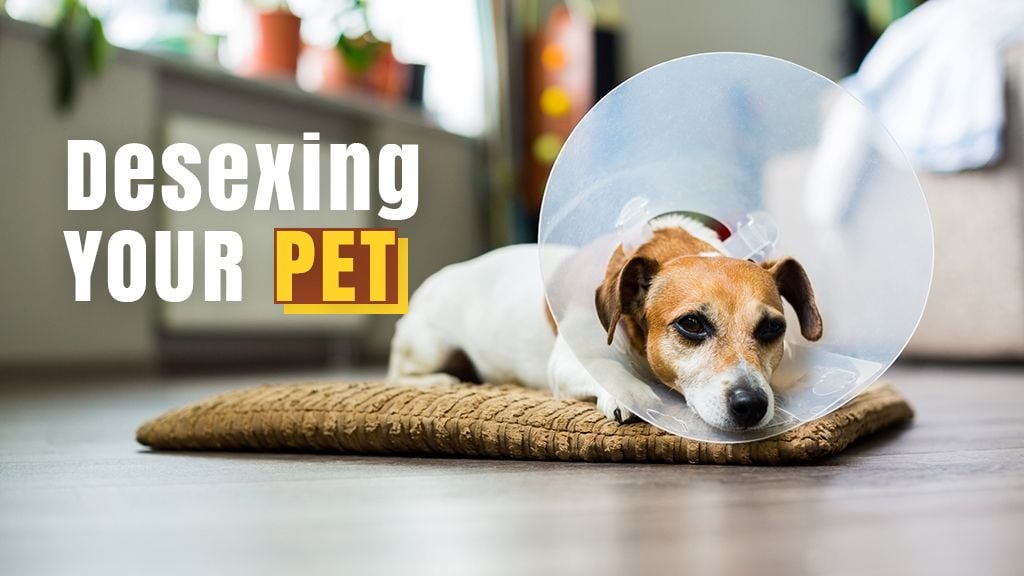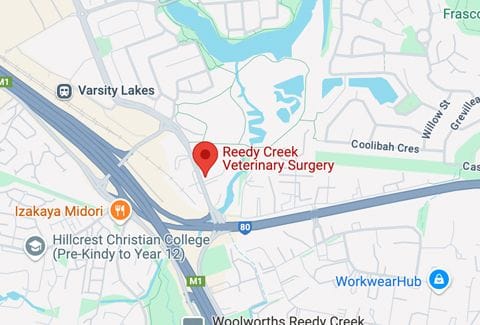All Your Questions About Desexing Your Pet Answered
)
When you've got a new, young pet in the family, the thought of putting them through a surgical procedure can be extremely daunting and scary. For the majority of pet owners, desexing is a necessary procedure but to ease your reservations, knowing the facts can help make your decision easier.
What happens when you desex your pet?
Desexing is essentially sterilisation, stopping your pet's ability to breed.
In female dogs, sterilisation helps to avoid unwanted pregnancies, bleeding and unwanted attention from male dogs.
In male dogs, castration can aid in behavioural issues, such as aggression, wandering, and unwanted sexual behaviour.
These benefits carry over to cats as well - however, desexing also reduces their chance of contracting feline immunodeficiency virus (FIV) through fighting.
In both animals, desexing can reduce males from marking their territory within the home.
Why is it important to desex your pet?
Desexing your pet is a personal choice, however, it's highly encouraged to reduce indiscriminate breeding that leads to overflowing animal shelters or the unnecessary amount of animals that are put down when they cannot find their forever home.
When should you desex your pet?
The optimal age for desexing your dog is an on-going debate and point of contention, with information continually updated in alignment with scientific developments on the topic. It's best to consult with your veterinarian on an individual basis, as the best course of action can also be dependent on your dog's size and breed.
Cats are usually desexed between 4 and 6 months of age, but once again a discussion with your veterinarian will help you choose the best time for your pet.
What does the desexing procedure involve?
Undergoing full anesthesia is involved in all desexing procedures. For males, desexing involves castrations - the removal of both testicles from beneath the skin. In females, the uterus and ovaries are removed from the abdomen through what is generally a small incision.
While a commonly performed procedure and one that's generally considered very safe, any surgery involving anesthesia carries a risk.
What is the aftercare for a pet that's been desexed?
You can expect that your pet will have a shaved area where any incisions were made. Generally, one of their front legs or a part of the neck will be shaved where blood was taken.
Internal or external sutures can also be expected after the surgery. With any sutures, it's highly important you do what you can to stop your pet from removing them. It's also important to keep your pet from licking their wound as this greatly increases the risk of infection.
It's important to try and keep your pet from removing any sutures prematurely - which can be difficult to do! One of the most common methods used to stop the premature removal of sutures is through an Elizabethan collar, also known as "the cone of shame" in colloquial terms. These are generally offered at the time of your pet's discharge.
For 5-14 days following the surgery, your pet will need to remain as quiet and relaxed as possible. This can also be difficult due to the young age the desexing procedure generally takes place. Without rest and relaxation, your pet's at risk of surgical complications including pain, swelling, tearing their stitches and wound breakdown.
If you notice any of these symptoms following your pet's surgery, contact us immediately:
- Bruising and discomfort
- Vomiting
- Broken sutures
- Urinary incontinence
- Swelling around the suture line
- Reduced appetite
- Lack of bowel movements for 2 to 3 days
To book your pet in to be desexed, contact us on (07) 5593 8395 or by booking a consultation appointment online here.
| Tags:Client InformationPet SurgeryProactive Pet Care |
&geometry(140x140))

